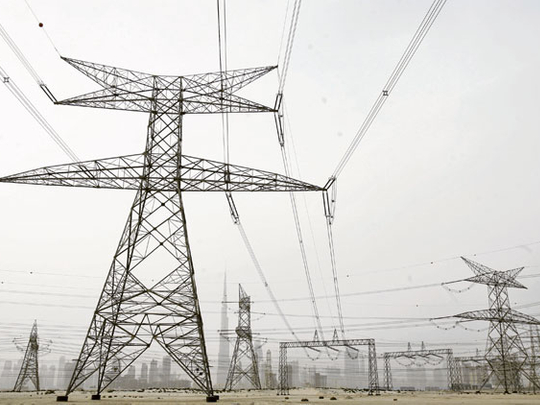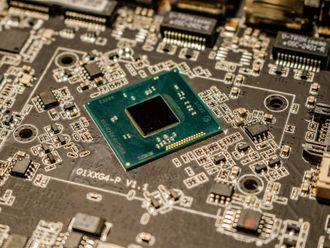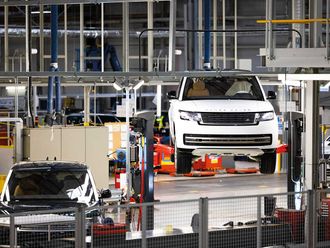
Dubai: Utility demand in the GCC is expected to grow 7 per cent to 8 per cent every year, with Gulf countries expected to spend $45 billion (Dh165.26 billion) before 2015 in order to add 32,000 megawatts of capacity, a report released by the Kuwait Financial Centre (Markaz) says.
It states that there are 361 power projects underway in the GCC at a total value of $277 billion, with 70 per cent of them in Saudi Arabia and the UAE. Saudi Arabia has the highest number at 161, followed by the UAE with 70.
The GCC countries have been trying to increase their power generation capacity for some years, the report points out, in an effort to meet rising demand from growing populations and economies.
Power consumption across the GCC has grown at an annual rate of about 9 per cent since 2002, and Saudi Arabia and the UAE account for 75 per cent of total GCC consumption.
One-third of the projects — with a value of $92 billion — are in the execution phase, and these are mainly in Saudi Arabia.
But while power projects are an increasing focus of the GCC countries, the global financial crisis has resulted in 11 per cent of projects in the region being cancelled — with a value of $31 billion — and put another 3 per cent on hold.
Over half of the cancelled projects, 15, are in Saudi Arabia — with a value of $17 billion — while $5.4 billion worth of UAE projects have been shelved.
That said, analysts remain upbeat about an increasing number of projects in the UAE.
"The GCC is expected to invest around $73 billion in power generation, transmission and distribution projects in the next five years, adding nearly 36 gigawatts of generation capacity in the same period," said Abhay Bhargava, industry manager at Frost and Sullivan's energy and power systems practice, Middle East and North Africa.
Major driver
He said that while in the UAE the decline of the construction sector has indeed impacted on previous forecasts of the increase in power-related investments, the emerging industrial sector is expected to reverse the decline and be a major driver for increased investments in power generation.
"Saudi Arabia is expected to lead the way, with more than 47 per cent of the total investments, and the UAE following significantly behind with just 13.7 per cent of the envisaged investment," he said.
Bhargava remarked that this increased investment reflects the aggressive diversification and industrialisation plans of the GCC economies that are being put into motion.
Meanwhile, the Markaz report pointed out how the GCC countries are gradually opening up to private sector participation in power projects, a model that has been used successfully in the region in the past.
With the announced split of the Saudi Electricity Company (SEC) into standalone generation, transmission and distribution companies, Bhargava expects to see a strategic shift in the way the power sector operates.
"In the long term, this is expected to pave the way for a GCC-wide privatisation of both generation and some sections of transmission and distribution," Bhargava said.
The Markaz report also showed how the GCC is interested in renewable energy as an alternative source of power, and Bhargava agreed that solar power is certainly gaining traction, with an increasing number of pilot projects being undertaken in the GCC.
"Nearly 105 megawatts of solar projects were tendered in 2010 in the GCC region.
"We estimate that an additional $4.5-$5 billion investment will be made by the GCC in the next five years for solar related power generation," he said.
Capacity doubles
The major power projects completed across the GCC during the past decade have now commenced operations — installed capacity has doubled from nearly 46,600 MW in 2002 to almost 98,000 MW in 2009: a CAGR of 10 per cent.
Currently, the GCC operates with a reserve margin of about 19 per cent with an excess reserve mainly in Qatar and Abu Dhabi (43 per cent and 30 per cent, respectively).












